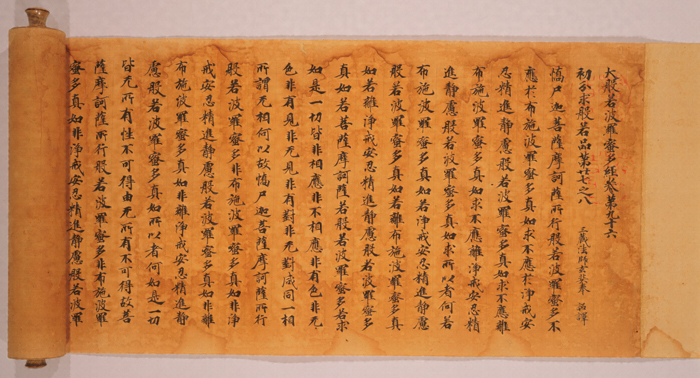大般若経 巻第九十六(魚養経)
だいはんにゃきょう かんだい96(ぎょようきょう)
概要
『大般若経』は、唐の玄奘三蔵が龍朔3年(663)に漢訳を完成した大部の経典で、600巻から成る。攘災招福のために読誦されることが多く、わが国では奈良時代から江戸時代まで、盛んに書写され、また摺写された。
この『大般若経』は薬師寺に伝来したもので、能筆の朝野魚養が書写したという伝承から「魚養経」と呼ばれる。大正年間に大部分が寺から出てしまったが、480巻余りの存在が確認されており(うち藤田美術館に387巻)、それらの校合奥書や正倉院文書から、宝亀元年(770)頃に官立の写経所(奉写一切経所)で書写されたことが判明する。文字はやや大ぶりで量感に溢れており、奈良時代後期を代表する写経遺品である。
巻首の首題部分に「薬師寺印」の朱円印、第一紙の紙背に「薬師寺金堂」の黒印が捺されている。撥型の軸首は白密陀の手法によるものである。
奈良国立博物館の名宝─一世紀の軌跡. 奈良国立博物館, 1997, pp.301-302, no.110.


